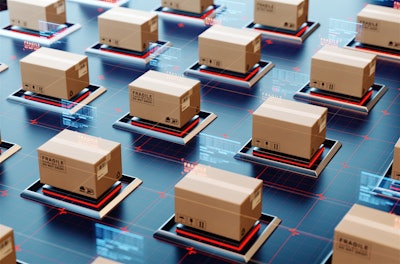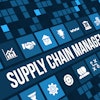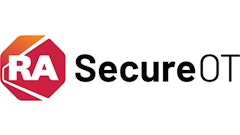
Many experts highlight blockchain’s potential to transform business processes, making data used in the supply chain more available, immediate and transparent, as well as having the ability to improve the overall customer experience. But will it? How will blockchain meet the challenges of tomorrow?
There are many enterprise consortia with “proof of concept (POC),” but it doesn’t yet have buy-in from partners or customers, and/or proof of scalability. The supply chain of today and the future faces daunting challenges, and unless blockchain technology can address them, the technology will not be successful beyond the current infatuation of today.
Supply chains in the future will be characterized and challenged by:
- Rising supply chain costs for products and services
- Increasing customer mandates for faster and more unique fulfillment
- Getting new personalized products to market quicker
- Achieving an end-to-end view to planning
- Accomplishing complete supply chain visibility
- Dealing with the move to a service-based consumption model and its upstream implications
- Balancing sustainability and innovation with demand.
To align with these future supply chain challenges, blockchain must significantly evolve. Today, the performance of supply chain execution on blockchain is extremely insufficient and the cost of transaction processing is high. Application program interfaces (APIs) need to be upgraded to Open APIs enabling trading partners to connect and participate on the blockchain quicker, more effectively and efficiently. Smart contract development and testing will need to support greater complexity, security and collaboration in rules and deployments. Blockchain will also need to incorporate more complex planning activities and utilize real-time demand. Finally, the speed of which blockchain executes more complex contracts and actions will need to improve.
To meet future supply chain goals, analytics capabilities will also have to be added to blockchain activities. Today there aren’t any analytic capabilities on a distributed ledger; instead, it requires a hybrid data warehouse or data lake. It will also be critical to enrich data into a canonical model for trading partners to share data faster.
Adoption Rate Needs Growth
Today, the blockchain adoption rate has to grow, as current participation is lower than 5 percent of enterprises in pilot projects. In fact, Gartner predicts that through 2022, 80 percent of blockchain initiatives will remain at a POC or pilot stage. Most blockchain projects are just small use cases where companies are trying to prove the benefits and value of blockchain.
The vision for the future use of blockchain is that it must expand to support supply chain issues and create value through tokenization. For example, the ability to order a personalized product, like a car, and have the demand captured instantly, which ripples down through the supply chain with the ability to see future customer demand across multiple entities and partners. Blockchain tokenization could occur based on the number of participants on the blockchain and the volume of orders coming through it. Or, in the case of an automobile purchase, a token could be based on consumer personalization, driver safety, accessories added or miles driven.
Today, there is no multi-enterprise planning on a blockchain network; you have to capture demand signals for each upstream signal separately. There is a need to coordinate demand and supply, along with issues that can occur after an immediate new product launch. For true blockchain network execution, digital supply networks have to evolve. Blockchain will not be widely accepted until it can engage quicker with customer demands and provide the tokenized value to its community.
What’s Next in the Evolutionary Cycle of Technology?
Blockchain technology is seeing a similar growth cycle, like the way the internet did. While the internet bloomed from intranets and extranets to be a de-facto standard for e-commerce enablement, blockchain technology will go through an evolution from transferring money to transferring value with algorithmic enrichment. There are multiple pivot points that the technology needs to go through, especially around tokenizing assets and the establishment of legal and regulatory frameworks to realize the true potential.
At a recent Gartner Conference, there was a discussion about a health care company application where people could tokenize the value of their own digital asset (e.g., medical record) by selling the asset to insurance agencies, other doctors, health clubs and the like. If the person lost weight or did something to gain better health, they would get more tokens. So, the value of a person’s asset would increase as they improve the asset.
This type of proof of value needs to be extended to blockchain before it will be suitable for mass adoption. People need to see the value in the blockchain. Blockchain brings value to the supply chain today by providing traceability and offering security and transparency of data.
What Blockchain Brings to the Industry
Blockchain provides consensus, immutability and security—the very things that are necessary for reliability and integrity in a supply chain. There is no dispute in the blockchain regarding transactions because all entities on the chain have the same version of the ledger. Since every transaction is recorded on a block and distributed across multiple copies of the ledger over many nodes (computers), it is highly transparent.
It’s also highly secure since every block links to the one before it and after it. There is not one central authority over the blockchain, and it’s extremely efficient and scalable. Ultimately, blockchain can increase the efficiency and transparency of supply chains and positively impact everything from inventory management to proof of delivery to invoice payment.
But blockchain needs to interact with machine learning, artificial intelligence, and the Internet of Things to orchestrate a quick and completely autonomous supply chain. In the meantime, as supply chains continue to evolve and become more responsive to customer demands, blockchain technology will get better in performance, scalability and security through more projects as greater participation takes hold. Value will be created and tokenization will be monetized in the blockchain using creative ideas. We have years of alignment to realize pervasive adoption, and we are on our way.



















